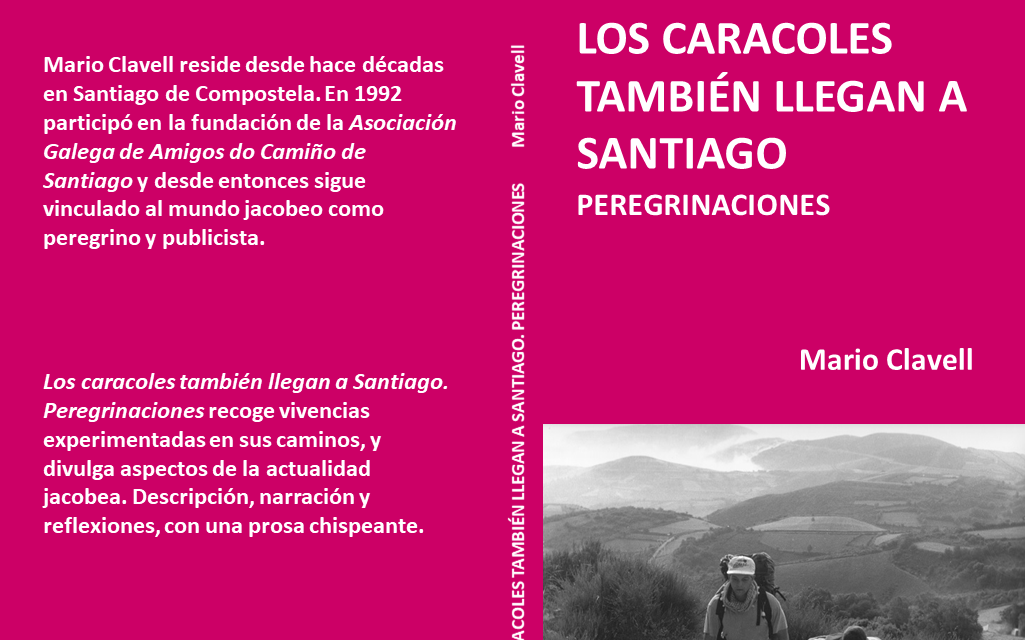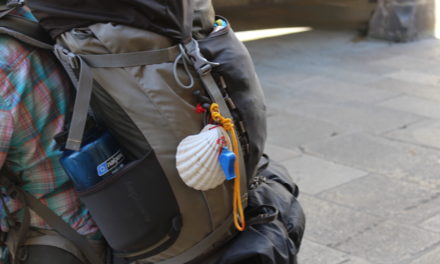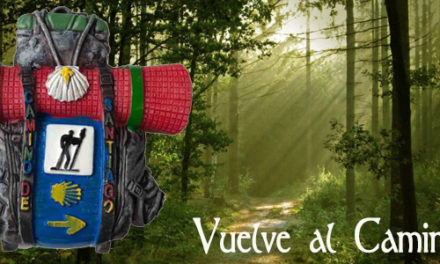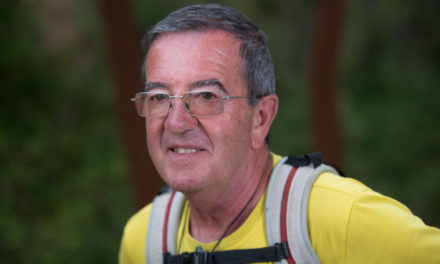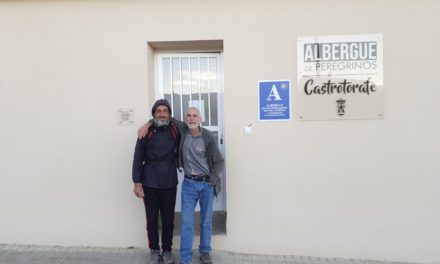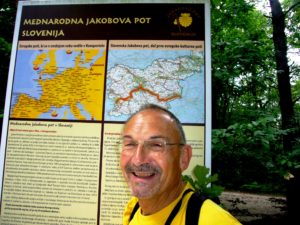 Mario Clavell, a catalan who has been living in Santiago for decades, is one of the people responsible for the current revitalization of pilgrimages to Santiago. He is a pilgrim, writer and teacher who is very active in defending, studying and promoting the Camino de Santiago as well as in Jacobean associations. He has just published a new book on the Camino, a book that combines his knowledge with his own experience as a pilgrim after reaching 60 years of age, that is, as a “snail” or a little slower pilgrim …
Mario Clavell, a catalan who has been living in Santiago for decades, is one of the people responsible for the current revitalization of pilgrimages to Santiago. He is a pilgrim, writer and teacher who is very active in defending, studying and promoting the Camino de Santiago as well as in Jacobean associations. He has just published a new book on the Camino, a book that combines his knowledge with his own experience as a pilgrim after reaching 60 years of age, that is, as a “snail” or a little slower pilgrim …
Let us start with the title of your book, “The snails also arrive in Santiago”, would those snails only be the oldest pilgrims or do you extend the term to mean a slower way of pilgrimage?
My title has a double meaning, on the one hand it refers to pilgrims over sixty years old. I am interested in them and for myself, since I am already 78 years old and I have made pilgrimages from Roncesvalles more than twice, since reaching sixty.
But it has a second meaning, that of the ‘snails’ who are forced to advance more slowly towards Santiago, either by walking shorter distances or by doing it in different years ,due to the fact that there is not always enough time or money available to undertake the full 800 kilometre Camino. Sometimes you have to reduce the length of the Camino, also because of the age or the physical capacities of each one. The truth is that long distances cannot always be tackled. If we take all these aspects into account, the snails that arrive in Santiago are not only those over 60 years of age.
-In the book you share with the readers many reflections and personal experiences, what motivated you? Why did you decide to turn them into a book?
I participate in an anthology, in the idea that what has been a good for one in some way places a moral obligation on you to share it with others, to spread it around. In this sense, my book arises from that kind of literature of the Camino – testimonials, travel diaries – that seeks a particular approach or personal profile and, at the same time, touch or awaken the pilgrimage memories of others or motivate other pilgrims to travel.
-The book is divided into three sections, the first two parts are almost of a pilgrimage itinerary …
Yes, they are two itineraries or pilgrimages that I did, very marked by testimonies of pilgrims whom I met, quotes and phrases, memories of personal encounters and also some personal reflections. Because the book is partly narrative-descriptive and partly reflective, although that last aspect is above all in the third part.
The first pilgrimage that I mention started around 1999 and I finished it in 2004. It was a pilgrimage that I did with one of my brothers and three other people, almost always in winter. We had very cold days, sometimes below freezing, with frost, but sometime it was warmer, although it did have that specific emotion that winter gives: encounters with interesting people, bare trees, clear skies, twittering of birds in the brambles … a discovery of nature that, together with the inner experience, is a very relevant discovery for city dwellers like me.
The second of these pilgrimages begins in 2012, already in April, with a very different landscape, in Navarra, Rioja, but also on the Plateau, with the green of the fields that have sprouted, the awakening after winter… All of this arouses particular experiences, such as inner experiences, long conversations, time for reflection and prayer, songs, childhood memories … The Jacobean world opens gates and windows to memory, also to the review of knowledge.
-You told us that the third part is the most reflective, a part that is subtitled “the snail comes to Compostela”
Yes, in it I describe the Jacobean city, what happens on arrival, the ‘afterway’. I am very interested in reflecting on what remains, what is said, the duration that the emotions and experiences of the Camino finally have. Some are short, others are lasting. For example, there are always friendships that are consolidated and maintained. In fact, now, with the pandemic, there are friends of the Camino who write to me from many countries and are interested in my well-being
-But you are a particular snail, one from Compostela …
I also come home, it’s true. When I arrive I unpack my backpack at my house and sleep there, but then I go to the pilgrim’s mass, often to Casa Manolo to meet up with pilgrims from the Camino again….
-Your book comes out in the midst of this confinement. This is a good time to read it, especially since we can buy it on Amazon. What are you reading in this period?
In these days of confinement I am re-reading books of pilgrims similar to mine, long-distance books, the majority of pilgrims who have been on the road for several months. I recognize that they have spent much more time walking than me, and have had to solve more serious problems such as blisters and painful tendinitis, or supply difficulties …
I think I have discovered that deeper reflections are reached when the journey is longer, for example, from Le Puy, Rome … But the final result is also influenced by the authors’ readings and knowledge.
-You tell me that you are a snail of 78 and a half years, will you go on another pilgrimage?
My back is not all that keen on the idea! I could only do it with backpack transport and for not too many days. But I sometimes go for the odd few stages and that is gratifying … The purism of the long Camino is cured with age, like when we used to laugh about transport services. Finally, we ended up going to Correos, Camino Fácil, Jacotrans… and having to thank him for it!
It is my personal case, many at my age can still walk the Camino. I know many people who do not have problems. For example, I remember a Dutchman I met on the Camino who was 90 years old and I have a good friend from Madrid of the same age, who walks his way from the Pyrenees every year.

